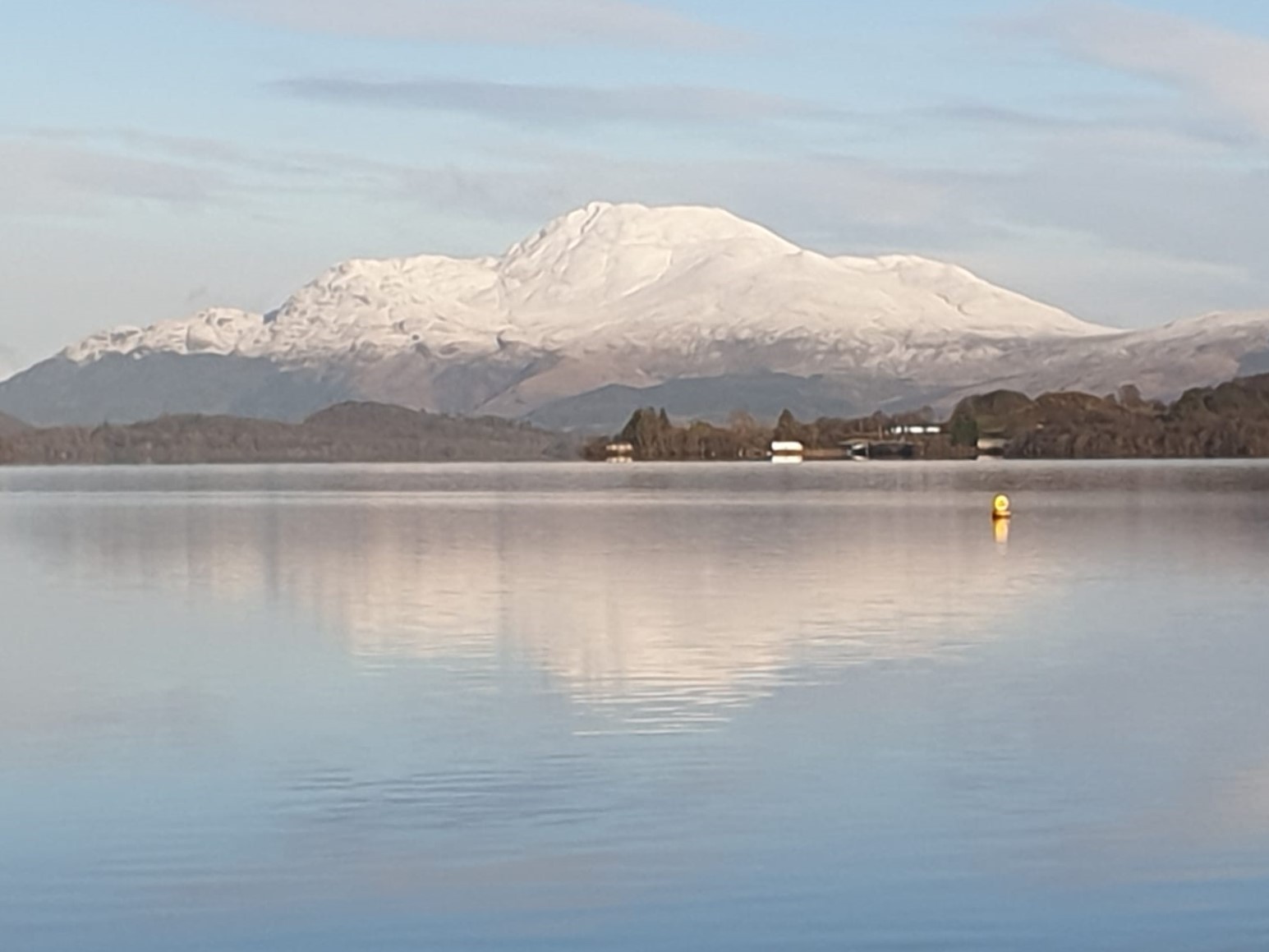The Big Blue team always ensure you are well supported from the moment you embark on a trip with us. Our Big Blue Guides are there to keep you safe and to assist with improving your technique to reduce the risk of injury whilst out in the open waters.
Our guides love what they do but, of course, it’s not a job they do all year round! You might be wondering what a Big Blue Guide does during the ‘off-season’ period, away from the warm, calm waters of Crete, Santorini or the Ionian Sea. Well, one of our guides, Greg, who currency lives in Scotland (UK), spends some of his time diving into the not so warm waters of the Scottish lochs…
WINTER SWIMMING WITH GREG…
For those of you who don’t know me, I was born in Australia and moved to Scotland in 2014. The part of Australia where I once lived would suffer freezing cold temperatures in the waters of around 14c (57F) in the depths of the deepest, darkest, coldest winter, and if you dared to swim in those frigid temperatures, a wetsuit was compulsory. Even the winter swim clubs who would swim in ocean baths (lidos) in the winter would have to put ice in the water to make it cold enough.
Upon moving to Scotland, I found that in summer the water in the lochs would stay below 14c until the middle of May and even the sea would stay around 14c in the summer. This was a culture shock, but I decided that the water was too stunning to stay out of, so I would wear a wetsuit all year round to keep me warm.
After a few years, I started to swim without the wetsuit in the summer, to enjoy the feel of the refreshingly cool water. Then, in 2016, I decided to try winter swimming and swim without a wetsuit.
So, how do I transition from the 25c (77F) water in Crete, back to the 10c (50F) water in Loch Lomond? One way is to go and sit in the cold water currents that creep across Vrissi Beach in Chora Sfakion, which have been measured at 14c. Upon my return to Scotland, there is a process that involves a little pain as the cold water hits you, as well as a lot of experience. My return swim might only be for 10 minutes or so before it gets too cold, but I would then increase my stay in the water each time, and before long I would be able to stay in for 40 minutes or so before needing to leave due to the cold temperature.
I swim with others at all times due to the exceptionally cold temperatures and the individuals I swim with know that some days the cold affects you more. It can be as simple as tiredness, too much to drink the day before, or a cool breeze blowing across the water. I always ensure I have several layers of clothing ready to put on afterwards to help my body warm-up, as well as a hot drink and food to hand. There is also the car heating system which I put on maximum heat to help warm up afterwards.
The winter of 2020/21 has been the coldest in 10 years in Scotland. The water in Loch Lomond was down to 3c before the latest lockdown hit, curtailing my swimming activities. I really love swimming in the winter, with the air being below zero and the snow on the hills around the loch, when the sun shines, is stunning. There is something special about driving to a swim and passing snow ploughs and gritter trucks working to keep the roads open. The picture I’ve added gives you some idea of the scene I am greeted with at Loch Lomond in the winter.
I have also found some smaller lochs closer to home that froze over for most of January, requiring a hammer or ice-axe to break the ice, making a smaller channel. I’ve added a picture that showcases one such day when the water was -0.1c (32F) and the air was -3c (26F). That was the coldest water I had ever swum in, and even though the swim was only 5 minutes that day, it was an amazing experience. 
WINTER SWIMMING TIPS
If you want to try winter swimming, please be aware of the risks involved, as it is a potentially dangerous activity. Find some people in your local area who are already well experienced and talk to them about it. Ensure you start slowly and try to stay slightly longer each time you get into the water. Cold water shock is real and is the way your body reacts to the cold water threat. You must learn to recognise it and control it, as it does not disappear. Have plenty of warm clothing for afterwards and above all, enjoy the experience!
And then when you do get back to Greece for a Big Blue adventure, you will relish the warm, sparkling, clear water even more.
This was certainly a great insight into winter swimming, especially in the cold temperatures Greg currently experiences in Scotland. If winter swimming sounds like something you’d be interested in, please do take Greg’s advice and find yourself a good support network before you get started. However, if it’s not for you and you’d still like to get out into the open waters then why not book a trip with us? You have four beautiful islands to choose from across Greece - Crete, Santorini, Lefkada and Ithaca! There are still spaces left on each of these islands, but summer is fast approaching so be sure to book asap! You can find information on each island on our website.
19 February 2021





